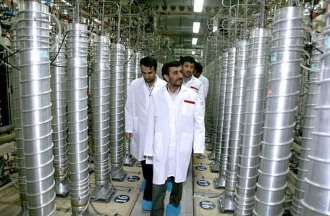According to diplomats familiar with the IAEA’s surveillance of Iran’s nuclear program, the nation stopped expanding its enrichment program in September, and has left nearly half of the centrifuges at the Natanz site idle.
 Exactly why this is the case remains a matter of some contention, but with Iran currently engaged in high stakes negotiations on trading some of its low-enriched uranium for somewhat higher enriched uranium for use in a medical reactor, it could be a move designed not further those talks.
Exactly why this is the case remains a matter of some contention, but with Iran currently engaged in high stakes negotiations on trading some of its low-enriched uranium for somewhat higher enriched uranium for use in a medical reactor, it could be a move designed not further those talks.
Whatever the case, diplomats say, “the situation is now pretty much as it was in September.” This means Iran is only producing a comparatively small amount of very low enriched uranium, which would only be useful in the Bushehr nuclear power plant.
This does serious harm to the case made by hawks in the US and abroad that the Iranian program is an impending threat or that Iran is attempting to dramatically increase the scope of its enrichment to achieve so-called breakout capability.
Instead, Iran’s enrichment program remains of very modest size, and remains under the watchful eye of the IAEA, which has repeatedly certified that none of its uranium is being diverted to any illegitimate purposes.


